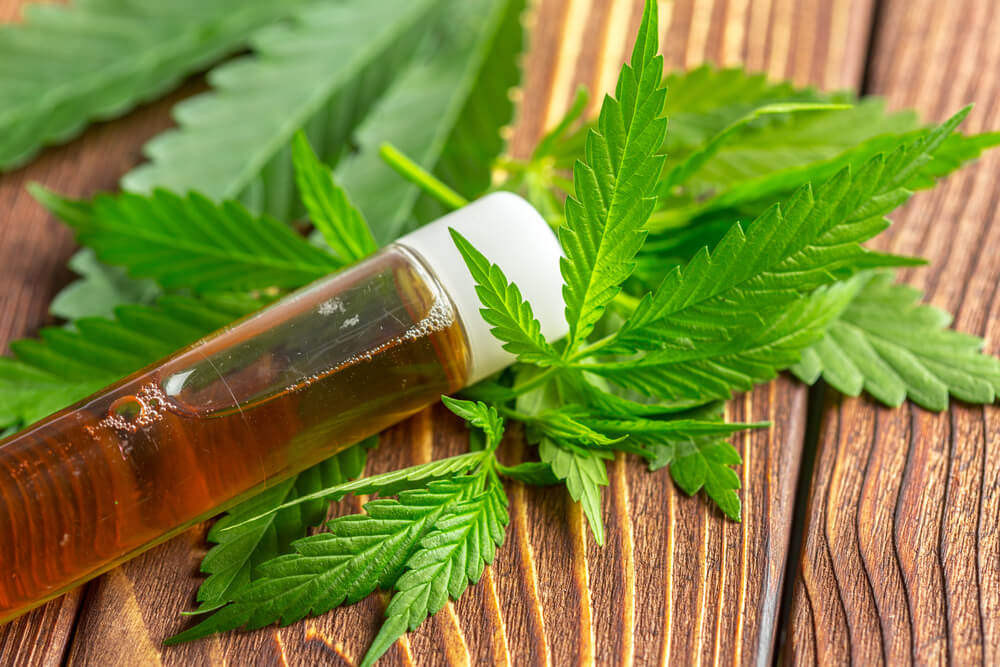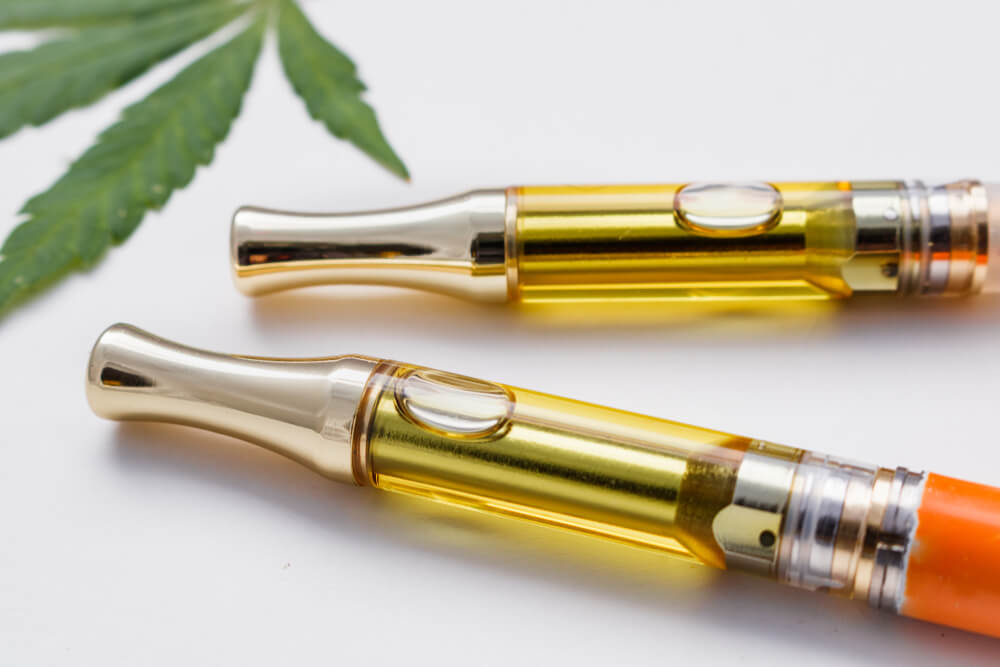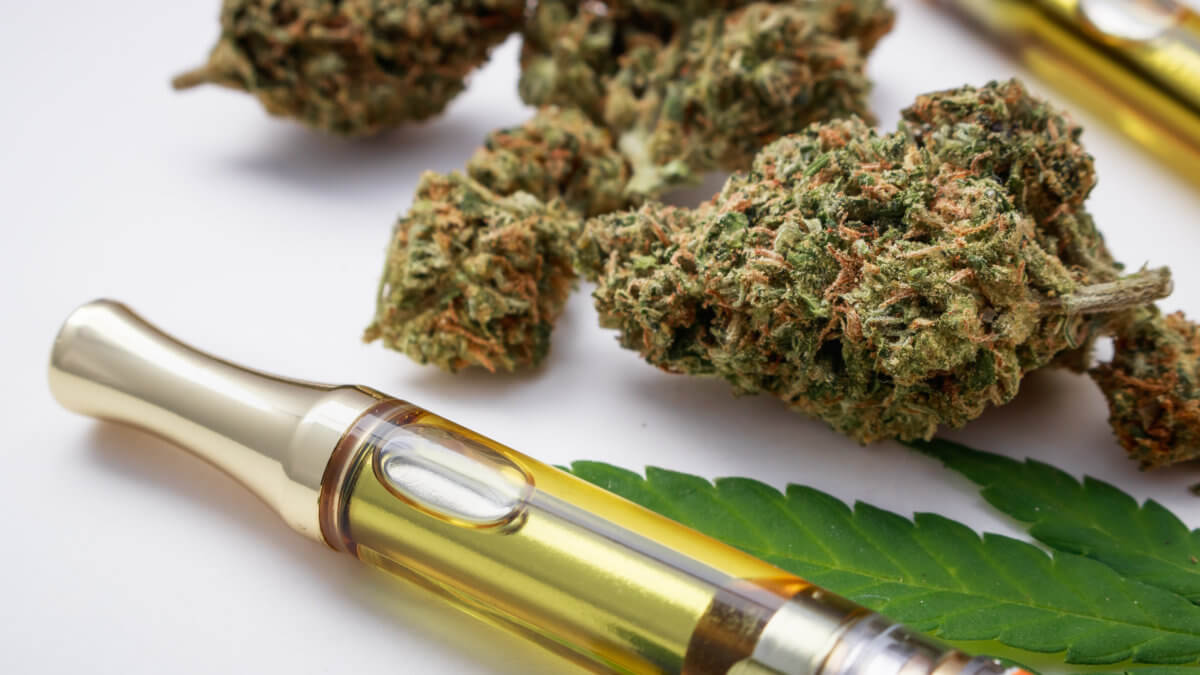Committee Blog: Manufactured Product Safety – 2021 Series Premier

by NCIA’s Cannabis Manufacturing Committee
Product safety isn’t an endpoint, it’s a journey. And let’s face it, there is years-worth of research left to do on the safety of cannabis products. That’s why it’s important to stay up to speed on the latest thinking from leaders in the industry. In 2021, the National Cannabis Industry Association’s Cannabis Manufacturing Committee intends to help you do just that by providing information and approaches aimed to help you continue to improve the safety of your manufactured cannabis (marijuana and hemp) products while providing your customers with increasingly trusted experiences. This Manufactured Product Safety Series will consist of blogs, podcasts, and expert panel discussions focused on providing insight into topics relevant to a wide range of manufacturers.
Over the course of the next several months, we’ll bring you content with the following working titles.
Vapor Liquid Formulations
The Importance of Testing Vapor Products as a System
Edibles Stability – Microbial Growth Due to Insufficient Packaging
Terpene Limits Across Multiple Product Formats
But while we’re busy crafting these new pieces, we want to take advantage of our past publications to keep important safety topics front and center. Back in January of 2020, in response to the then-emergent EVALI outbreak, NCIA’s Policy Council created a whitepaper to provide guidance to the industry and regulators. We’re republishing portions of this whitepaper starting with the Vaporizer Liquid Formulations section below. We’ve learned more about EVALI since its original publication, and while some of the specifics may be a little dated, the principles remain relevant to helping you understand product safety.
Disseminating our knowledge of this topic also helps promote better regulation. Examples of what can go wrong are the Oregon Liquor Control Commission’s (OLCC) recently adopted regulations that effectively ban the use of propylene glycol (PG). Granted, they were addressing a difficult issue and made some good decisions, but had they read this piece, they might have better understood that PG “degradation has been shown only with temperatures in excess of what is typically produced by well-controlled hardware.” Even in studies where the temperature was not well controlled, thermal degradants were detected in amounts that are lower in the vapor stream when compared to combustion and inhalation of plant products, such as cannabis flower. And given that PG has been “used at up to 90% concentration in e-cigarette products for the past decade without reports to date of significant health issues,” it is unwise to ban an ingredient option that may turn out to have a better safety profile than even certain native terpenes, some of which may have to be added at abnormally high concentrations in order to achieve the desired viscosity, without further research.
So with that in mind, stay tuned for the next piece in the series and enjoy the excerpt below!
Excerpted from THE KEY TO CONSUMER SAFETY: DISPLACING THE ILLICIT CANNABIS MARKET RECOMMENDATIONS FOR SAFE VAPING
Access the full report and citations.
Cannabis Ingredients
The cannabis-derived ingredient in cannabis oil vaporizers is a concentrate that is produced by extracting the cannabinoids and other compounds from the plant. With the exception of supercritical CO2 extraction, most other common extraction methods use butane, alcohol, or hexane as solvents for the extraction of cannabis oils used in vape pens. Extraction processes using these solvents may result in a small presence of the solvent in the extracted oil. Any residual solvent must ultimately be removed prior to any product being sold to consumers. States that have legalized and regulated cannabis typically have specific requirements regarding allowable concentration levels of these solvents. These states also require full analytical testing by licensed independent labs, including reporting of residual solvents, to ensure that only safe levels of any solvents are present in the final formulation of cannabis vape products.
The type of cannabis concentrate used in a vaporizer is important to consider. Some require diluents or other additives to be effectively vaporized while other types of concentrates (eg: live resin) have the appropriate viscosity to be used in vaporizers without adding any diluting non-cannabis ingredients.
Non-Cannabis Ingredients
Propylene Glycol (PG), Vegetable Glycerin (VG) aka Glycerol, and Polyethylene Glycol (PEG)
Similar to what we are seeing in the commercial e-cigarette industry, some manufacturers of cannabis extract-containing vape pens choose to add ingredients that help adjust the viscosity of the cannabis oil. This allows the oil to flow evenly through the atomizer when heated. Some of these additives may also contribute to a vapor “cloud” when exhaled. PG, VG, and PEG are the most commonly used cosolvents or diluents. PG and VG are on the FDA’s Inactive Ingredient List for inhalable drug products and are allowable only at fairly low concentrations in drug products, but have been used at up to 90% concentration in e-cigarette products for the past decade without reports to date of significant health issues. PEG is not on the FDA’s list and less is known about its inhalation toxicity. Therefore, PEG should be viewed with more caution, even at lower concentrations.
The state of Colorado has paved the way for the industry on forward-thinking cannabis regulations and remains an industry leader. Governor Polis, his cannabis advisor, and the Marijuana Enforcement Division should be commended for creating an environment in the state that fosters business development while simultaneously protecting consumers. After discussions between Colorado regulators and stakeholders about additives, and given the lack of sufficient safety reviews of these ingredients, the state of Colorado prohibited Polyethylene glycol (PEG); Vitamin E Acetate; and Medium Chain Triglycerides (MCT Oil) in inhalable concentrates and products effective January 1, 2020. Colorado further banned non-botanical terpenes, any additive that is toxic, and any additive that makes the product more addictive, appealing to children, or misleading to patients or consumers. Other states should consider following Colorado’s lead.
The creation of degradants through overheating is also an important consideration. For example, overheating PG and VG may result in their degradation into molecules with established toxicity profiles such as glyceraldehyde, lactaldehyde, dihydroxyacetone, hydroxyacetone, glycidol, acrolein, propanal, acetone, allyl alcohol, acetic acid, acetaldehyde, formic acid, or formaldehyde. However, this degradation has been shown only with temperatures in excess of what is typically produced by well-controlled hardware. Because PEG is a polymer of glycerin, its degradation upon heating is similar to that of VG and it forms the same unwanted toxic molecules.
Vitamin E Acetate and Tocopherols Inhalable Safety Profile Has Not Been Evaluated
Investigators at the FDA and CDC recently found that some cannabis-containing vape products from the illicit market contain a molecule called vitamin E acetate (VEA), also known as Tocopheryl acetate. Vitamin E is a common name for several similar types of chemicals called “tocopherols.” Vitamin E occurs naturally in certain foods, such as canola oil, olive oil and almonds, but also can be made synthetically. Tocopherols are used as nutritional supplements, and manufacturers put tocopherols in food and cosmetics. VEA is the acetic acid ester derived from vitamin E and is also not known to cause harm when ingested as a supplement or applied to the skin.
VEA’s safety when inhaled has not been evaluated. Numerous published studies indicate that the inhalation of vaporized oils, including certain tocopherols, are harmful to the lungs and numerous cases of lung injury after their inhalation have been documented since 2000. Tocopherols such as VEA adhere to an important fluid in the lungs called lung surfactant. Lung surfactant enables oxygen to transfer from air into your body. Studies have shown that tocopherols impair gas transfer in the lungs. Currently, it is believed that inhalation of significant amounts of certain tocopherols can lead to the death of lung cells and initiate a massive inflammatory reaction that can further contribute to lung damage and functional impairment. Accordingly, VEA should not be used as an additive in any inhaled product. Following the FDA and CDC’s investigation, Colorado added VEA to their list of prohibited ingredients in inhalables to their regulations effective January 1, 2020.
Artificial Flavorings Have Not Been Fully and Scientifically Evaluated.
Some manufactures of cannabis extract-containing vape pens choose to add flavoring agents to the cannabis oil to give them a distinctive flavor, similar to products in the electronic cigarette industry. These additives tend to produce flavorings that are appealing to some consumers. While a number of flavorings have been used for many years without incident, the safety of the majority of flavorings when added to vaporized products – alone or in combination with cannabis extracts – have not been fully and scientifically evaluated.
In one study, certain chemicals that are used in flavorings for vanilla, cherry, citrus, and cinnamon can create compounds called acetals when they are mixed with solvents such as PG and VG. Acetals are known to cause irritation when inhaled and can lead to chronic inflammation in the lung. The long-term
effects of these flavoring agents on lung function are unknown. A separate study showed that some popular flavorings may increase the risk of cardiovascular disease when inhaled, although several other studies show no negative effects.
As approximately 17 million Americans use vape products, many of which contain flavors, and only around 2,000 cases of e-cigarette, or vaping, product-use associated lung injury (EVALI) are currently being reported, it appears unlikely that all flavoring agents in all hardware devices are linked to EVALI. However, until more detailed safety studies have been completed on these product lines, manufacturers should proceed with caution.
Some Terpenes are Safe (GRAS); Some Can be Harmful When Heated
Terpenes are a class of molecules found in many plants, including cannabis, that are responsible for the aroma of the plant. Plants evolved to make terpenes to attract pollinators and to deter herbivores and unwanted pests. Terpenes are biologically active and help contribute to many of the physiological effects of inhaled cannabis. Isolated terpenes have been widely used as fragrances in perfumes in the cosmetic industry and in medicine, such as aromatherapy. Although many terpenes are considered “Generally Regarded As Safe” (GRAS) by the FDA, some terpenes are toxic when inhaled/ingested at high concentrations. While most cannabis goods on the market contain levels of terpenes similar to those that occur naturally in the cannabis plant (~1-5%), some products contain terpenes at much higher concentrations (upwards of 25%). High levels of terpenes and other molecules can also occur if chemical procedures such as distillation are used to concentrate cannabis or hemp oil.
In general, terpenes are benign at low concentrations; however, overexposure to concentrated terpenes has the potential to lead to negative effects, including hypersensitive (allergic) reactions in chemically sensitive people. Additionally, some vape pens do not have the means to adequately control the temperature and can heat the cannabis oil to a very high temperature. In certain instances, this has been shown to lead to thermal decomposition of some molecules in cannabis extracts, such as terpenes, resulting in the formation of new molecules with established toxicities. It is also worth noting that even when these new molecules have been shown to form, they have been detected in amounts that are lower in the vapor stream when compared to combustion and inhalation of plant products, such as cannabis flower, or tobacco leaf.
Cannabis-derived Terpenes
Cannabis contains terpenes, such that cannabis oil extracts used in vape products typically also contain these molecules, depending on the extraction method. Typically, the distillation process causes a loss of terpenes. Some vape manufacturers now recover cannabis-derived terpenes during the distillation process and then re-introduce them back into the final formulated product. Because of poor process control, one potential safety concern from this procedure is that these cannabis-derived terpenes have an undefined molecular composition and the specific concentration of any terpene in the crude mixture likely varies from batch-to-batch due to numerous experimental variables. For example, many manufacturers that are producing large volumes of vape products by necessity must make the oil extracts from a mixture of cannabis strains. Since every cannabis strain contains different terpene profiles, this means that formulated products made from these strains will also vary in their terpene profiles from batch-to-batch.
The potential for terpene profiles changing during the manufacturing process could pose a potential safety concern. Additionally, new isomers, oxidative by-products, or degradative terpenes may be present in these captured terpenes, which could possibly present hazards never presented by merely combusting and smoking the cannabis plant. Some states that have regulations on cannabis require analytical testing of formulated products, including the reporting of terpene concentrations, but this is not yet the universal standard. Vape manufacturers must exercise caution and be required to analyze terpene profiles of products they make in order to begin to develop a better understanding of this subject. Adhering closely to terpene concentrations known to be present in cannabis flower is a good practice.
Non-Cannabis Derived Terpenes Can Contain Residual Solvents and Pose Dangers
One widespread misconception in the cannabis vape industry is that cannabis-derived terpenes are somehow safer or better for you than non-cannabis-derived terpenes. There are few cannabis-specific terpenes because most terpenes are also present in other plants. Most cannabis vape manufacturers that operate at a large scale, therefore, prefer to use terpenes isolated from non-cannabis sources to introduce into their formulated products. There are several reasons why this is popular in the industry. High purity terpenes (e.g. >99% pure) are sold by numerous retailers, which allows these terpenes to be re-introduced into cannabis vape products at defined and safe concentrations. Also, the cost of using non-cannabis-derived terpenes is far lower than the cost of isolating and using cannabis-derived terpenes.
For example, the terpene D-Limonene is present at extremely high levels in citrus fruits, and therefore can be isolated to high purity easily and inexpensively from them. In contrast, in most cannabis strains D-Limonene is only found at relatively low concentrations, and therefore one would have to use massive amounts of cannabis material to isolate significant quantities of this terpene required for companies that are operating at scale.
The origin and concentration of non-cannabis-derived terpenes that manufacturers use in their formulations is nevertheless important. Non-cannabis-derived terpenes from overseas often have several residual solvents in them, including ethanol, hexane, xylenes, benzene, butane, and toluene. Moreover, some retailers of non-cannabis-derived terpenes do not list the actual concentration or purity of terpenes in their products. It is imperative that cannabis vape manufacturers purchase and use non-cannabis derived terpenes that are accompanied by a COA that reports the purity of the terpene, any solvent(s) that may carry the terpene, and be required to adhere to the same purity standards and mandatory analytical testing requirements as cannabinoids. Reputable companies will also supply a safety data sheet (SDS) that describes the known toxicities of that terpene by different routes of ingestion, including inhalation.
Cannabis manufacturers that make formulated vape products should be aware of any toxic liabilities of non-cannabis-derived molecules introduced into these products. Vape products should also undergo analytical testing for cannabinoids, terpenes, and contaminants. Finally, analytical tests for aerosolized cannabis, similar to those used in the e-cigarette industry, should be developed, implemented, and mandated to address safety concerns. The industry needs to build the volume of inhalation safety data required for all of these ingredients, hardware, and end product combinations.


 The vaping crisis was first reported in June 2019. In October 2019, the U.S. Centers for Disease Control and Prevention (CDC) coined a new medical term describing the cases of severe pulmonary disease that have occurred among e-cigarette and vape users, E-Cigarette and Vaping Associated Lung Injury, or EVALI. EVALI’s primary cause was determined by the
The vaping crisis was first reported in June 2019. In October 2019, the U.S. Centers for Disease Control and Prevention (CDC) coined a new medical term describing the cases of severe pulmonary disease that have occurred among e-cigarette and vape users, E-Cigarette and Vaping Associated Lung Injury, or EVALI. EVALI’s primary cause was determined by the 
 In September of last year, reports began surfacing of mysterious respiratory illnesses generally associated with the use of vape cartridges, including those containing cannabinoids. Over the following months, reports of these cases climbed to more than 2000 nationwide, including more than 50 deaths. The Center for Disease Control and state health agencies struggled to determine the proximate causes, but it became increasingly clear that the vast majority of these cases were linked to unregulated cannabis vape products. As the focus began to narrow on the presence of Vitamin E acetate and other additives in unregulated products,
In September of last year, reports began surfacing of mysterious respiratory illnesses generally associated with the use of vape cartridges, including those containing cannabinoids. Over the following months, reports of these cases climbed to more than 2000 nationwide, including more than 50 deaths. The Center for Disease Control and state health agencies struggled to determine the proximate causes, but it became increasingly clear that the vast majority of these cases were linked to unregulated cannabis vape products. As the focus began to narrow on the presence of Vitamin E acetate and other additives in unregulated products,